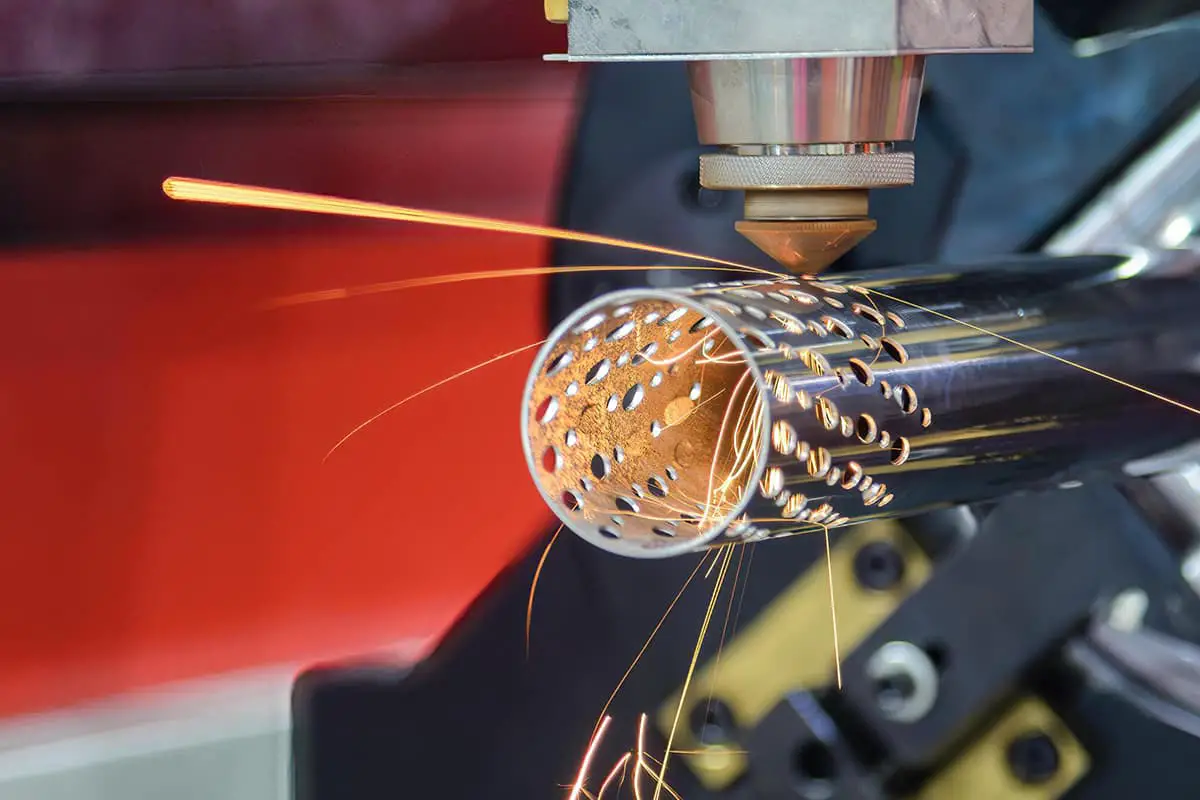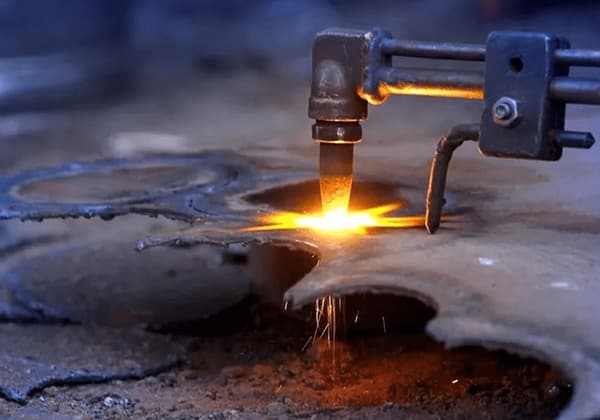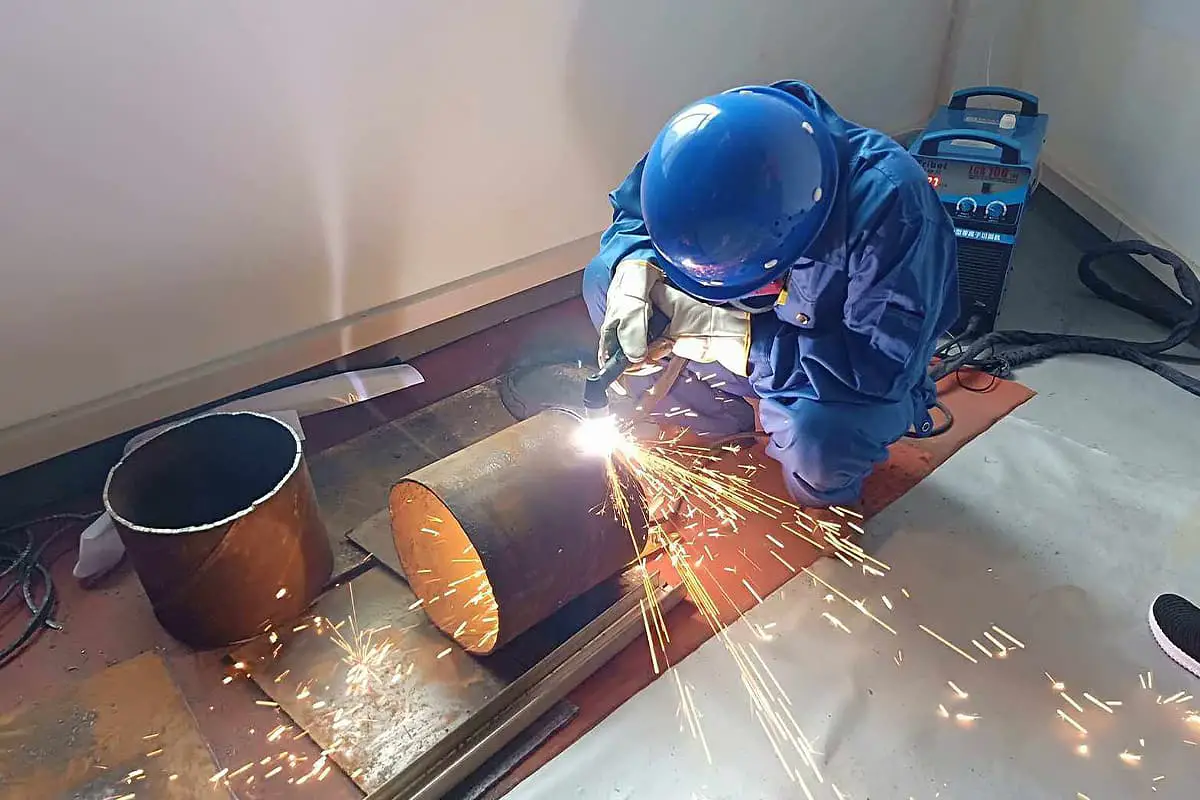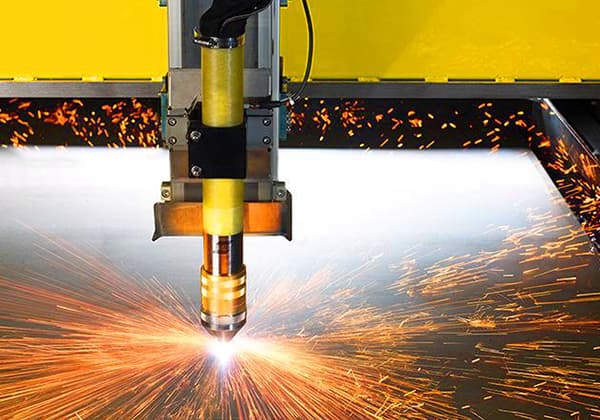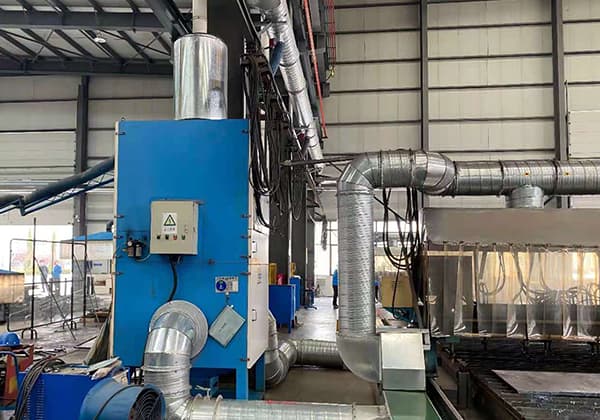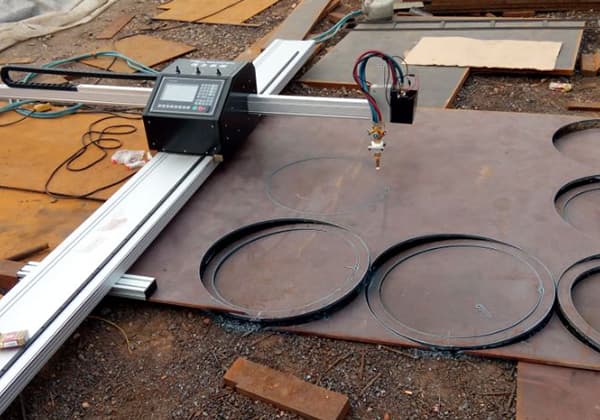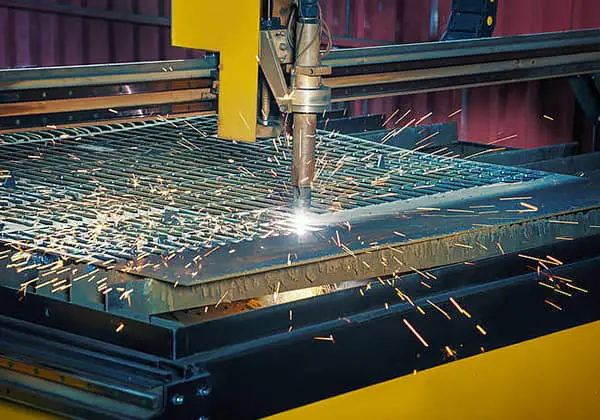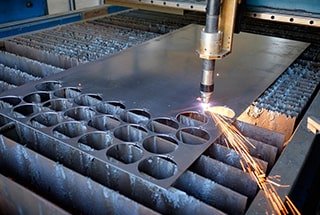
Ever wondered how underwater structures get cut with precision? Dive into the fascinating world of underwater arc-oxygen cutting! In this article, you’ll explore the essential equipment and techniques that make this challenging task possible, ensuring both efficiency and safety for divers. Get ready to uncover the secrets behind this incredible engineering feat!
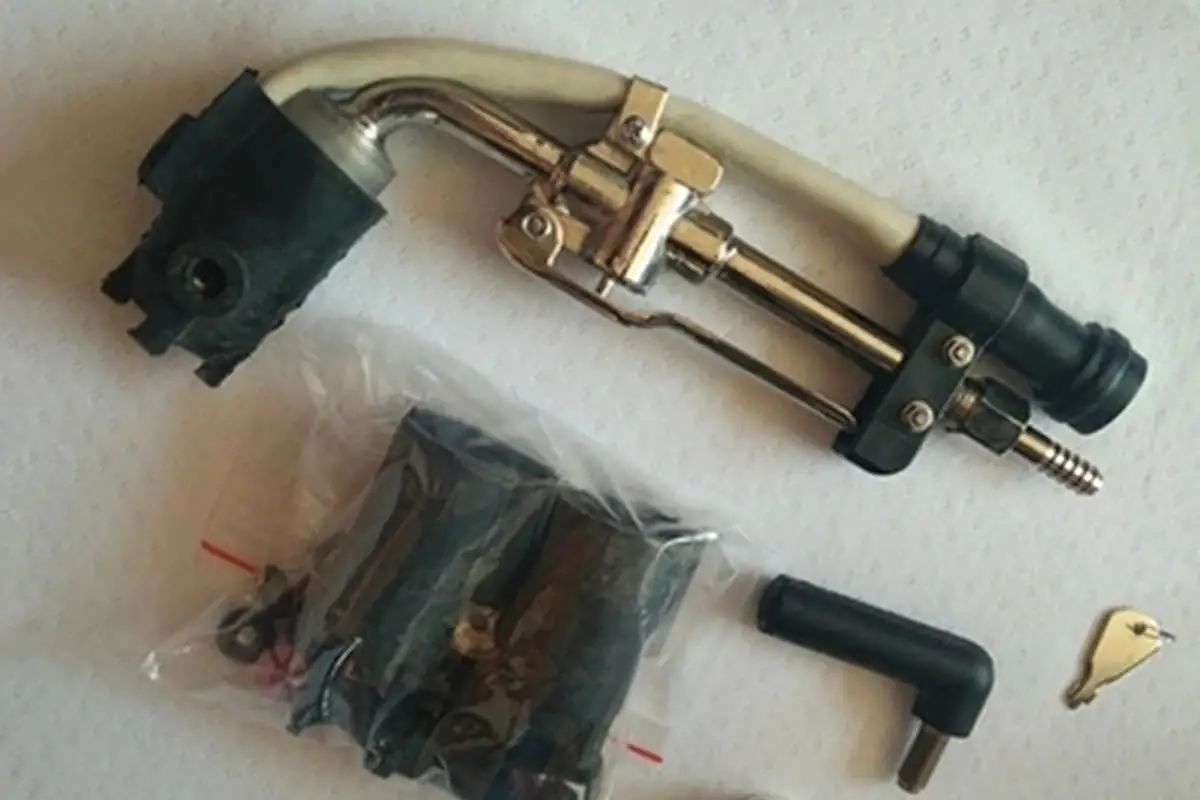
The main equipment used in underwater arc-oxygen cutting includes the cutting power supply, cutting torch, cutting cable, circuit breaker, and oxygen supply system.

1) Cutting Power Supply
The power supply used in underwater arc-oxygen cutting is similar to the one used in underwater electrode arc welding, which is a direct current arc welding power supply.
However, it has a higher power rating, and the nominal output current should not be less than 500A.
Common underwater cutting generators include models such as AX1-500 and AX8-500.
In addition, the ZDS-500 type underwater welding power supply and ZXG-500 type arc welding rectifier power supply can also be used for underwater cutting.
Particularly, the ZDS-500 type underwater welding power supply, a ship-specific arc welding power supply, has water, moisture, and vibration resistance, high overload capacity, easy arc initiation, stable arc, and can improve cutting efficiency.
2) Cutting Torch
The underwater arc-oxygen cutting torch should meet the following technical requirements:
① The distance from the cutting bar holder to the center of the handle should be 150~200mm, and the weight in water should not exceed 1000g;
② The torch head should have an automatic arc breaking device to prevent drying of the torch head;
③ The torch should have devices like a backfire preventer to prevent hot slag from blocking the gas passage and prevent the oxygen valve from burning;
④ The connection devices between the torch and the cable and oxygen pipe must be convenient and reliable, ensuring the solidity and airtightness of the connection. The cutting bar clamping device of the torch should be simple and have a certain clamping force;
⑤ The cable connector is solid, the charged part must be insulated, and its insulation resistance is not less than 35MΩ, and withstands 1000V (industrial frequency AC);
⑥ The oxygen valve should open and close flexibly, the connection is solid, it does not leak under 0.6MPa air pressure, and the gas flow rate is not less than 1000L/min;
⑦ The outer surface of the torch components should be chrome or silver-plated for corrosion resistance, and the coating should not have defects such as peeling.
Below picture shows the SG-III type underwater arc-oxygen cutting torch produced in our country. Experience has shown that this type of torch is quite suitable.
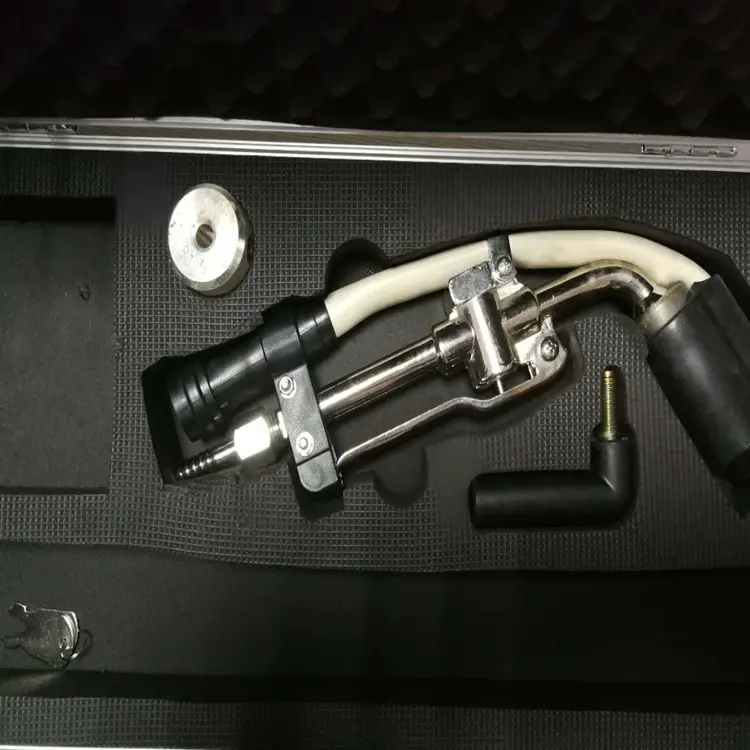
If maintained properly, it has a long lifespan. However, after the cutting bar hole at the head of the torch has been in use for some time, its contact performance with the cutting bar will deteriorate, which often leads to arc generation at this location, causing torch damage.
In addition, after long-term use, the insulation of the torch will decrease, which may lead to leakage during the cutting process, endangering the safety of the diver.
Therefore, it is necessary to regularly inspect the torch and repair or replace damaged parts in time.
3) Cutting Cables and Switches
Cables used in underwater arc-oxygen cutting should be marine cables with multi-strand copper cores and a rubber sheath that resists seawater corrosion. The cross-sectional area of the cable is generally 70-100mm2, and its length depends on the water depth.
If the water flow speed is high, the cable needs to be extended. If marine cables are unavailable, welding cables for terrestrial use can be substituted, but they need to be checked regularly. Should any aging or cracking of the rubber sheath be discovered, the cable must be replaced immediately to prevent leakage.
The cable connecting the power supply and the cutting torch is colloquially referred to as the “torch line,” while the one connecting the power supply to the cut workpiece is called the “ground line.”
For underwater operation safety, a cutoff switch is connected to the torch line to provide or cut off power promptly based on the diver’s requirements. The cutoff switch can be a single-blade switch or an automatic circuit breaker, and its conducting elements should have sufficient conducting cross-sectional area.
An automatic circuit breaker can rapidly increase the voltage to the level required for arcing during ignition, and quickly cut off the power supply during arc breaking or electrode replacement.
This device measures 420mm×340mm×270mm, weighs about 30kg, and is suitable for direct positive circuitry.
4) Oxygen Supply System
The underwater arc-oxygen cutting oxygen supply system consists of an oxygen cylinder, a pressure reducer, and an oxygen pipe.
① Oxygen Cylinder:
The volume of the oxygen cylinder is generally 40L, with a weight of 60kg, an external diameter of 219mm, and a height of 1450mm.
It is painted sky blue and marked with the word “oxygen” in black paint. An oxygen cylinder is a high-pressure container, with a rated pressure of 15.15MPa.
When using an oxygen cylinder, pay attention to the following:
a. It must be placed steadily during use and should not be mixed with other cylinders, especially not with flammable gas cylinders or liquid fuel containers.
b. The oxygen cylinder should be kept at a distance of at least 5m from fire sources and at least 1m from general heat sources. It should be protected from exposure to strong sunlight and open flames.
c. The oxygen passage should not be contaminated with grease, especially at the oxygen cylinder valve.
d. Do not completely empty the oxygen in the cylinder. At least 1-2 gauge pressure should be kept to blow off dust and prevent other gases from entering when refilling.
e. A vibration-resistant rubber ring should be installed at the cylinder, and it should be handled gently to avoid impact and slipping.
f. Regular hydrostatic testing should be done on the oxygen cylinder. Unqualified cylinders should be repaired or decommissioned promptly.
② Pressure Reducer:
A pressure reducer is used to lower the high-pressure oxygen in an oxygen cylinder down to the pressure required for operation, ensuring stability of the oxygen pressure during work.
Two pressure gauges are mounted on the reducer to indicate the pressure inside the cylinder and the working gas pressure respectively.
There are many types of reducers, divided by principle of operation into direct-acting and reaction types; by pressure reduction stages into single-stage and multiple-stage.
In practice, single-stage reaction type reducers are commonly used for underwater arc-oxygen cutting. When using a pressure reducer, the following points should be noted:
a. Prior to installing the pressure reducer, the oxygen cylinder valve should be opened first to blow off dust and other impurities from the valve nozzle using the oxygen. During operation, the oxygen cylinder valve nozzle should not be directed towards the body.
b. Check whether all connections are tightened and whether there are any slip threads, and adjust the screw to its loose position.
c. After installing the reducer, open the oxygen cylinder valve again, check whether the pressure gauge is working normally and whether there are any leaks. Once everything is normal, connect the oxygen hose.
d. If the reducer is contaminated with grease, it must be wiped clean before use.
e. If the reducer freezes, it is not permitted to defrost it with fire. It can be defrosted with hot water or steam.
f. If a self-flow phenomenon is observed in the reducer, i.e., when the adjustment screw is loosened, the low pressure gauge still automatically rises, this may be due to dirt on the spool or spool seat of the reducer, or uneven contact surfaces, causing high-pressure gas to seep into the low pressure chamber.
At this time, the dirt should be removed and the spool should be smoothed with fine sandpaper. If a crack is found in the spool seat, it must be replaced in a timely manner.
The occurrence of self-flow may also be due to damage to the secondary spring, leading to insufficient pressure, which should be replaced.
1) Cutting Power Supply:
To meet the special requirements of underwater plasma arc cutting, the power supply for underwater plasma arc cutting uses a thyristor transistor switch and rectifier, and is water-cooled.
It has a steep droop characteristic, ensuring cutting parameters and arc stability when the arc length (arc voltage) changes; and transitioning from a “small arc” to a cutting arc can smoothly reach the given current value without generating surge current according to the natural interrupt characteristic.
This power supply considers reducing the no-load voltage to 110V in the control circuit and obtaining the external characteristic curve required for manual arc welding, making it also suitable for underwater manual welding.
Table 1 lists the main technical parameters of a typical underwater plasma arc cutting power supply.
Table 1: Main Technical Parameters of a Typical Underwater Plasma Arc Cutting Power Supply
| Cutting Current/A | 300~600(With a rated load continuous rate of 60%, during a cutting cycle of 10 minutes.) |
| No-load Voltage/V | 180 |
| Maximum Working Voltage/V | 140(When the cutting current is set to 600A.) |
| “Small Arc” Current/A | 50 |
| “Small Arc” Power Supply No-load Voltage/V | 180 |
2) Underwater Cutting Torch
The distinctions between underwater plasma arc cutting and above-ground cutting torches are as follows:
① An external shield is added to the nozzle, through which cooling water or gas is flowed, forming a “water curtain” (or gas curtain) to prevent water from entering the arc area. This allows the arc to burn stably and also prevents the electrolysis of seawater from affecting normal cutting;
② Every connecting part has good water tightness;
③ They possess high-voltage insulation resistance.
Figure 4 and Figure 5 respectively illustrate two types of underwater plasma arc cutting torch structures. The KB model torch is designed for freshwater cutting, with dimensions of 160mm×370mm×40mm and a weight of 2.5kg.
The PM model torch is used for seawater cutting, with dimensions of 150mm×350mm×35mm and a weight of 2.5kg.
To ensure the water tightness of all connecting parts, a pasty organic silicone adhesive is commonly used. This material vulcanizes at room temperature, transforming into a rubber-like substance, providing moisture resistance, heat insulation, and good insulating properties.
It maintains excellent sealing performance within a large temperature range (-55 to 300 degrees Celsius).
To prevent air from entering the working gas channel and damaging the electrode during arc initiation, a check valve needs to be installed at the gas inlet. The working gas pressure opens the valve, expelling the temporarily stored air.
For the PM model torch, when the open circuit voltage of the power supply is 180V, a leakage test was conducted in seawater. The highest leakage voltage was 10V, which shows it is safe and reliable to use in seawater with a salt mass fraction of 1.7% – 2.0%.
The nozzles of these two torches can be cooled by either freshwater or compressed air. They can be used for underwater cutting of carbon steel, stainless steel, and aluminum alloy within a depth of 52 meters.
3) Underwater Cutting with Melted Electrode Water Jet
Underwater cutting with a melted electrode water jet is primarily semi-automatic. In China, dedicated cutting equipment is available, model GSS-800.
The cutting equipment consists of a main machine (including cutting power supply, control device, water circuit system, and high-pressure water pump), wire feeder, cutting torch, remote control box, combined cable reel, and ground cable reel.
The power supply for underwater cutting with a melted electrode water jet is fundamentally the same as the power supply for above-ground melted electrode gas-shielded welding, being a natural flat characteristic arc welding rectifier, but with higher power.
The rated output current is generally 500-1500A. Table 2 lists the main technical parameters of the GSS-800 model underwater cutting equipment using a melted electrode water jet.
Table 2: Main Technical Parameters of the GSS-800 Model Underwater Cutting Equipment Using a Melted Electrode Water Jet
| Input Power Supply | Voltage/V | 3-phase 380V |
| Frequency/Hz | 50 | |
| Rated Input Current/A | 100 | |
| Rated Input Capacity/kW | 65 | |
| Cutting Power Supply | Power Specifications | Direct current, natural flat characteristics. |
| Maximum Cutting Current/A | 800 | |
| Rated Load Continuity Rate/% | 60 | |
| No-Load Voltage Regulation Range/V | 50~70 | |
| Torch and Wire Feeder | Wire Cutting Diameter/mm | 2.5 |
| Wire Feed Speed/m.min-1 | 4~9 | |
| Wire Feed Hose Length/m | 4 | |
| Wire Spool Capacity/kg | about 15 | |
| Gas Supply Pressure/MPa | 0.8 | |
| High-Pressure Water Pump | Motor Power/kW | 3 |
| Operational Hydraulic Pressure/MPa | 0.6~1.0 | |
| External Dimensions (Length × Width × Height) /mm | Main Machine | 2120×1120×1615 |
| Combined Cable Drum | 1552×1620×1805 | |
| Ground Cable Drum | 1452×1370×1655 | |
| Wire Feeding Box | 600×360×660 | |
| Weight /kg | Main Machine | 1300 |
| Combined Cable Drum | 1000 | |
| Ground Cable Drum | 8000 | |
| Wire Feeding Box | 50 |
This cutting equipment can perform semi-automatic cutting of metals such as carbon steel, stainless steel, copper, and aluminum with a thickness of 10-28mm at a water depth of 60m.
It is especially suitable for underwater metal cutting in projects such as underwater salvage, seabed mining, and laying of submarine oil pipelines. It uses a 2.5mm diameter cutting wire, and the cut width is 4-5mm.
Underwater arc-oxygen cutting is suitable for conductive metals but is primarily used for cutting easily oxidized low carbon steel and low alloy high strength steel.
Generally, there are three types of cutting strips used in underwater arc-oxygen cutting: steel tube cutting strips, ceramic tube cutting strips, and carbon rod cutting strips.
The oxygen used in underwater arc-oxygen cutting is general industrial oxygen, with purity divided into two grades: the first grade is not less than 99.2%, and the second grade is not less than 98.5%. The oxygen supply method is bottled: the oxygen is compressed to 120-150 atmospheres, filled into oxygen bottles for use and storage.
1) Steel Tube Cutting Strips
The structure and manufacturing method of steel tube cutting strips are similar to underwater welding rods. They are made by using seamless steel tubes as the core, and coated with mineral coatings or wrapped in plastic fiber film.
The coating mainly plays roles in waterproofing, insulation, and arc stabilization.
The waterproof performance of the cutting strip can be achieved in two ways: one is to add a waterproof agent to the coating, which has waterproof performance after drying; the other is to apply a layer of waterproof agent to the cutting strip after drying, to achieve the waterproof purpose. The structure of the cutting strip is shown in Figure 6.
The outer diameter of the cutting strip core is generally 6-10mm, the inner diameter is 1.25-4.0mm, and the length is 350-400mm.
The practice has proven that the cutting efficiency is greatly related to the inner diameter of the cutting strip. The thickness of the aerated block also matters.
Under the same cutting conditions, as the inner diameter of the cutting strip increases, the cutting speed and efficiency also increase, as shown in Table 3.
Table 3: Cutting efficiency when cutting 10-12mm thick steel plates
| Cutting Bar Outer Diameter /mm | Cutting Bar Inner Diameter /mm | Oxygen Pressure /MPa | Working Current /A | Cutting Length per Bar /cm | Cutting Time per Bar /s | Oxygen Consumption per Bar /m3 |
| 6 | 1.25 | 0.65 | 240 | 24 | 55 | 0.18 |
| 7 | 2 | 0.65 | 260 | 28 | 61 | 0.30 |
| 8 | 3 | 0.7 | 340 | 32 | 61 | 0.35 |
Increasing the inner diameter of the cutting strip improves the cutting speed, possibly due to the accelerated oxidation resulting from increased oxygen supply. At the same time, the force blowing on the molten metal and slag is enhanced, which helps to quickly remove them from the cutting area.
There are foreign examples of using cutting strips with an outer diameter of 10mm and an inner diameter of 4mm, which perform well in cutting thick steel plates. However, oxygen supply is challenging in offshore operations, and it’s not suitable to consume too much oxygen, so larger inner diameter cutting strips are generally not used.
Adding a suitable amount of metal powder to the cutting strip coating can improve its electrical conductivity, stabilize the arc, and greatly enhance the heat of the cutting strip’s oxidation reaction, thereby increasing the cutting speed.
Among them, the best effect comes from iron powder, followed by magnesium and aluminum powder. When these metal powders are separately added to the ilmenite-type coating, the iron powder should not exceed 35%, and the magnesium and aluminum powder should not exceed 10%.
If too much metal powder is added, the coating’s performance will decrease, and its strength and waterproofing ability will also reduce. If several types of metal powders are added simultaneously, their proportions should be appropriately reduced.
Furthermore, for coatings with added metal powder, their weight ratio should be appropriately increased, but it should not exceed 30% to avoid impairing the coating’s performance. – Jiangsu Jinfeng Underwater Technology Engineering
Steel cutting strips are tough, affordable, and provide good cutting quality (narrow kerf and smooth cut surface).
Although they also melt due to the arc heat and need frequent replacement, practice has shown that when cutting workpieces thicker than 19mm, the overall cutting efficiency of steel tube cutting strips is higher than that of ceramic tube cutting strips. Steel tube cutting strips are the most commonly used in underwater arc-oxygen cutting.
The underwater arc-oxygen steel tube cutting strips produced in our country are type 304, and they consist of a low-carbon seamless steel tube with an outer diameter of 8mm and an inner hole diameter of 3mm, coated with a 1mm thick medication layer.
Its waterproof insulation layer is phenolic varnish, and it comes in two lengths: 350mm and 400mm.
Person in charge: Tao Xiaobin. The type 304 cutting strip is an ilmenite-type thick coating cutting strip with a weight ratio of 20%. Its performance is not inferior to similar foreign products.
The newly developed underwater arc-oxygen cutting strip features a mixed binder replacing the previous water glass as the coating binder material, making the cutting strip more suitable for long-term preservation and deep-water cutting.
This cutting strip can still be used after being soaked in seawater for 240 hours, and its cutting efficiency is even higher than the type 304 cutting strip.
2) Ceramic Tube Cutting Strips
Cutting strips made with a ceramic tube core are known as ceramic tube cutting strips. They typically have an outer diameter of 12-14mm, an inner diameter of 3mm, and a length of 200-250mm.
During manufacturing, the ceramic tube is first baked at high temperature to give it a certain toughness, then a steel coating (about 8mm thick) is sprayed on its outer surface to increase the strength of the ceramic tube.
The end of the ceramic tube, around 32mm in length, should be ground to a diameter that matches the cutting torch’s size for clamping purposes. The remaining part is coated with insulating material or wrapped with water-tight insulation material to form the ceramic tube cutting strip.
The metal exterior of ceramic tube cutting rods not only enhances the rod’s strength, but also improves its electrical conductivity and arc initiation performance. During cutting, the outer metal first contacts the workpiece to be cut.
Due to the skin effect of the current, as a portion of the current flows from the outer metal to the workpiece, an arc is initially generated between the outer metal and the workpiece, melting the outer metal first.
Simultaneously, the arc and molten metal preheat the diamond grains at the end of the cutting rod, thereby increasing their electrical conductivity.
At this time, the cutting current flows not only on the outer metal of the ceramic tube cutting rod, but also on the ceramic tube itself, directing the arc towards the end of the rod for stable combustion.
Because ceramics possess high anti-oxidation capability, a single ceramic tube cutting rod can be used for 40 to 60 minutes, significantly reducing the auxiliary time for underwater cutting operations.
However, the cutting speed per unit of pure cutting time is lower than that of steel tube cutting rods, and the arc stability is also inferior. Therefore, in situations where time is a constraint and only one or two cutting rods are sufficient to complete the task, it is advisable to use steel tube cutting rods.
3) Carbon rod cutting
Carbon rod cutting rods are made from hollow carbon rods or graphite tubes, plated with an outer layer of copper.
They have an outer diameter of 10 to 11 mm, an inner hole diameter of 1.6 to 2 mm, and a length of 200 to 300 mm.
Carbon rod cutting rods have a lower compressive strength, and to prevent the end of the rod from being crushed by the cutting torch clamp, a brass end cap is installed on one end. To start cutting, the end cap is inserted into the clamp. To prevent electric shock, an insulating layer (plastic or resin) is applied over the copper plating.
The lifespan of carbon rod cutting rods is quite long, second only to ceramic tube cutting rods.
For a 200 mm long carbon rod cutting rod, its working time is approximately 10 to 12 times that of a 400 mm long steel tube cutting rod; however, the cutting speed per unit of pure cutting time is lower than that of steel tube cutting rods.
Underwater plasma arc cutting primarily uses N2, Ar-H2 mixed gas, O2 and compressed air as plasma gases; CO2, Ar, N2, and compressed air can be used as shielding gases.
Different plasma gases require corresponding electrode materials. In general, tungsten electrodes should be chosen when the plasma gas is N2 or Ar-H2 mixed gas, while hafnium electrodes should be used when the plasma gas is O2 or compressed air.
Since underwater cutting requires a large current, water-cooled electrodes should be used to extend their lifespan.
When using N2 as the plasma gas, although the cutting speed and quality are both high, the consumption rate is quick and the operator needs a high skill level. Especially when cutting at depths greater than 40 to 60 m, the nozzle is prone to damage.
Therefore, Ar should be preferred as the plasma gas for deep water cutting, and Ar-H2 mixed gas should be used as the plasma gas for shallow water cutting.
The current submerged arc water jet cutting process employs either solid-core cutting wire or flux-core cutting wire.
1) Solid-Core Cutting Wire
This method utilizes CO2 gas-shielded welding wire or aluminum wire, typically with a diameter of 2.4mm. Using CO2 welding wire for cutting within a water depth of 200mm has the following characteristics:
i) Water depth does not significantly impact the cuttable thickness or the resulting cut thickness.
ii) As the arc voltage increases, the cut becomes wider, and the lower part may even flare out. If the water depth increases by 100m, increasing the arc voltage by 5-10V can result in a cut shape similar to that obtained in shallow water.
iii) The pressure of the water jet should increase with water depth. The appropriate water pressure is the hydrostatic pressure equivalent to the water depth plus 0.5MPa (for cutting low carbon steel) or 0.35MPa (for cutting aluminum).
iv) Aluminum is easier to cut than low carbon steel. Due to aluminum’s lower melting point and infrequent arc short-circuiting, cutting aluminum is 50% faster than cutting low carbon steel under the same plate thickness and cutting current conditions.
v) When cutting low carbon steel, more slag sticks to the lower edge of the cut; less slag occurs when cutting aluminum, and it can be removed with a wire brush. This is due to the brittle iron-aluminum alloy formed during the cutting process.
When using aluminum wire to cut low carbon steel, no slag sticks to the lower edge of the cut, and the cut surface is smooth.
However, to achieve the same cutting current as when cutting with CO2 welding wire, the wire feeding speed should be increased, often exceeding the range of standard MIG welding wire feeding speeds.
2) Flux-Core Cutting Wire
Flux-core cutting wire uses low carbon steel MIG welding wire, typically with a diameter of 2.4mm. Submerged arc water jet cutting with flux-core cutting wire can cut both carbon steel and stainless steel, as well as aluminum.

